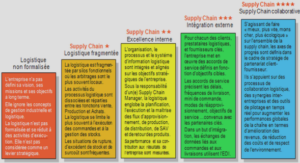Institutional drivers of efficiency in the public sector
This section briefly summarises the findings of the literature regarding the potential institutional drivers of efficiency. The institutional arrangements that have been reviewed in the literature summarised here include: i) practices ensuring increased results orientation, such as budget practices and procedures and performance measurement arrangements; ii) arrangements that increase flexibility, including devolution of functional and fiscal responsibilities from central to sub-national governments, agencification, intra-governmental coordination, methods for strengthening competitive pressures through privatisation and other means; and iv) various workforce issues, including workforce size, its composition, the extent and nature of unionisation and the attractiveness of the public sector. Overall, the evidence is surprisingly scant. Available research is inconclusive with respect to the impact on efficiency of varying the mix of inputs used or of changing structural and managerial arrangements. However, some findings emerged in three areas. First, it seems that efficiency gains could be obtained by increasing the scale of operations, based on evidence collected mainly in the education and health sectors. This effect is attributed to economies of scale that result from savings in overhead costs and fixed costs in tangible assets. However, the impact on other public sector values such as equity, access to services, and the quality of services needs to be taken into account.
Second, functional and political decentralisation (i.e. spending responsibility) to sub-national governments also seems beneficial for efficiency. In principle, devolution of functional responsibilities, if accompanied by appropriate fiscal and political decentralisation, provides incentives for sub- central governments to deliver locally preferred services more efficiently, as the burden and the benefits of public service delivery both accrue in the communities. Evidence from federal countries shows that decentralised taxation reduces the size of government; however, evidence on the comparison of countries is inconclusive in this regard. Third, human resource management practices also matter a great deal. The soft aspects of human resource management, such as employee satisfaction and morale, are considered to be the most important drivers of performance. While wages are still important for staff, non-monetary incentives are also essential. High wage levels – compared to similar work in the private sector – could lead to inefficiencies, although governments often are model employers and their wage policies reflect equity concerns as well.
Wages are also important for attracting and retaining qualified staff, especially in case of skill shortages. Performance-related pay initiatives appear to have a low impact on staff motivation.
There is extensive literature on wage differences between public sector workers and otherwise comparable private sector workers covering many OECD countries. In many countries wages in the public sector are higher than in the private sector although they vary over time and across countries. The public sector wage difference is the highest at the lower end of the wage distribution (i.e. low-salaried or poorly-skilled workers are paid better in the
public sector) and decreases as one moves up the wage distribution. Significant differences have also been found in the differential by various worker characteristics, such as occupation and gender. For example, in Germany wages for men were lower in the public sector than in the private sector, but the opposite was found for women.
The strict division between career-based systems and position-based systems does not reflect the reality of OECD countries. Many fall in between, with systems characterised by a relatively high level of delegation of HRM functions to ministries and a relatively low level of individualisation (lifelong careers and minimum lateral entry). These hybrid systems are often termed department-based systems. There are also countries with a high level of individualisation and a low level of delegation.
Findings are more inconclusive on the impact of ownership, competition and agencification. While private ownership is not a guarantee of higher efficiency, public ownership does not necessarily lead to higher inefficiencies either. Rather than ownership per se it is the importance of competitive pressure on efficiency that matters. However, there is a need to further explore for what and with whom public organisations compete. The nature of service delivery, e.g. whether it has features such as low asset specificity (high levels of alternative uses for resources) and low information costs, is crucial for successful competition in public services..






